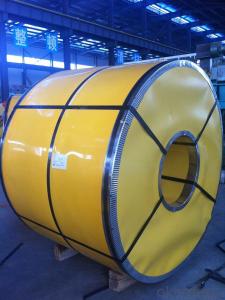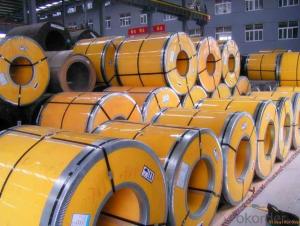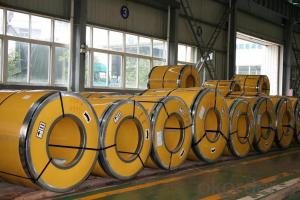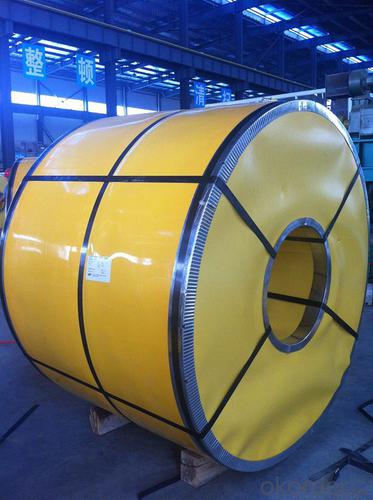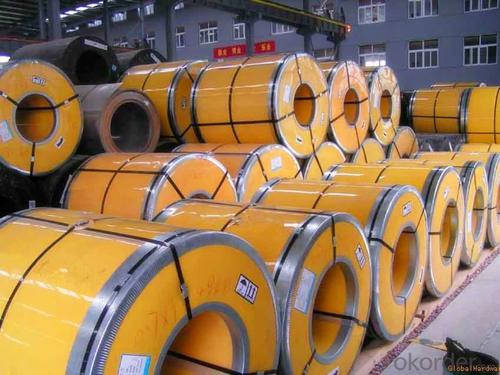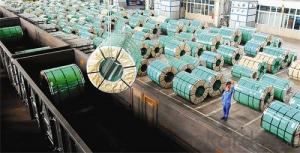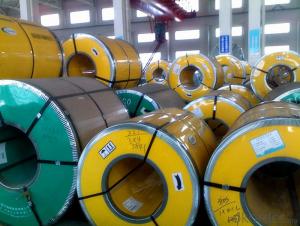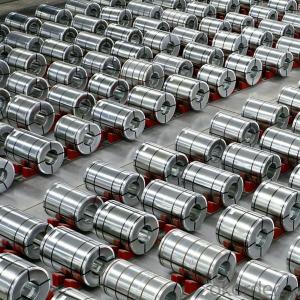Stainless Steel Sheet/ Strip 304 Cold Rolled 2B Finish
- Loading Port:
- Ningbo
- Payment Terms:
- TT OR LC
- Min Order Qty:
- 100 m.t.
- Supply Capability:
- 20000 m.t./month
OKorder Service Pledge
OKorder Financial Service
You Might Also Like
Cold Rolled Stainless Steel Coil 304 Grade 2B Finish
Packaging Detail: standard export packing or as customer's requirements
Delivery Detail: 7-15 days after the order
Standard: | AISI,ASTM,BS,DIN,GB,JIS | Grade: | 304 | Thickness: | 0.3-3.0mm |
Place of Origin: | China Mainland | Brand Name: | CNBM | Model Number: | 304 |
Type: | Steel Coil | Technique: | Cold Rolled | Surface Treatment: | 2B, BA |
Application: | Medical instruments, building, chemical food industry agriculture | Width: | 500-2000mm | Length: | Coil |
finish: | 2B, BA | item: | 304 cold rolled stainless steel coil | density: | 7.93 |
- Q: Can stainless steel strips be used in the pharmaceutical manufacturing industry?
- Stainless steel strips are indeed applicable for use in the pharmaceutical manufacturing sector. The pharmaceutical industry frequently employs stainless steel due to its impressive resistance to corrosion, durability, and hygienic qualities. In the production of various pharmaceutical equipment like tanks, vessels, piping, and machinery, stainless steel strips are commonly utilized. These strips possess excellent resistance to chemicals, heat, and moisture, which renders them suitable for the stringent hygiene and cleanliness requirements of the pharmaceutical manufacturing process. Moreover, stainless steel is easy to clean and maintain, ensuring the prevention of contamination and the maintenance of a sterile environment. All in all, the pharmaceutical industry favors stainless steel strips due to their dependability, longevity, and adherence to regulatory standards.
- Q: What is the embrittlement temperature of stainless steel strips?
- The embrittlement temperature of stainless steel strips may differ depending on the grade and composition of the stainless steel in question. Stainless steel is generally recognized for its exceptional toughness and resistance to brittleness, even at low temperatures. However, embrittlement can occur under certain circumstances. One factor that can contribute to embrittlement is the presence of hydrogen. Stainless steel may experience hydrogen embrittlement in specific environments, such as high-pressure hydrogen gas or environments containing hydrogen sulfide. In these cases, the embrittlement temperature typically ranges from 200-500°C (392-932°F). The embrittlement temperature can also be influenced by the carbon content of the stainless steel. Higher carbon content can result in sensitization, making the steel susceptible to intergranular corrosion and subsequent embrittlement. The embrittlement temperature due to sensitization varies depending on the grade of stainless steel but generally falls within the range of 450-850°C (842-1562°F). It is crucial to note that these embrittlement temperature ranges are approximate and subject to variation based on the specific grade, composition, and processing history of the stainless steel. Therefore, it is advisable to consult the technical data and guidelines provided by the stainless steel manufacturer or industry standards to determine the embrittlement temperature for a particular stainless steel strip.
- Q: What are the factors affecting the creep resistance of 111 stainless steel strips?
- The factors affecting the creep resistance of 111 stainless steel strips include the alloy composition, grain size, temperature, and applied stress. The presence of elements like chromium, nickel, and molybdenum enhances creep resistance. A fine grain structure enhances resistance, while higher temperatures and applied stresses can reduce the creep resistance of the stainless steel strips.
- Q: What are the recommended safety guidelines for cutting 111 stainless steel strips?
- The recommended safety guidelines for cutting 111 stainless steel strips include wearing appropriate personal protective equipment such as safety goggles, gloves, and a face shield to protect against potential flying metal shards. It is also important to use a sharp cutting tool specifically designed for stainless steel, and to apply steady pressure and avoid excessive force while cutting. Additionally, working in a well-ventilated area or using local exhaust ventilation can help minimize exposure to fumes and dust. It is crucial to follow proper handling and storage procedures for the steel strips, and to consult manufacturer guidelines or seek professional assistance if needed.
- Q: Can 111 stainless steel strips be polished to a mirror-like finish?
- Yes, 111 stainless steel strips can be polished to a mirror-like finish.
- Q: Are 111 stainless steel strips suitable for architectural applications?
- Certainly, architectural applications can indeed benefit from the use of 111 stainless steel strips. Architects often prefer stainless steel for its exceptional durability, resistance to corrosion, and appealing visual qualities. The grade 111 stainless steel offers a cost-effective and easily obtainable option for a wide range of architectural uses, including wall cladding, roofing, handrails, and decorative elements. Nevertheless, it remains crucial to carefully assess the unique demands of each architectural project and seek guidance from experts to guarantee that the chosen material adheres to the essential standards and specifications.
- Q: Can stainless steel strips be used in the aerospace industry?
- Yes, stainless steel strips can be used in the aerospace industry. Stainless steel is a versatile and durable material that exhibits excellent properties such as high strength, corrosion resistance, and heat resistance. These qualities make stainless steel strips suitable for various applications in the aerospace industry, including aircraft construction, engine components, and structural support systems. Additionally, stainless steel strips can withstand extreme temperatures and intense pressure, making them ideal for use in aerospace environments.
- Q: What are the common weight tolerances for stainless steel strips?
- The common weight tolerances for stainless steel strips can vary depending on the specific grade and thickness of the strip. However, typical weight tolerances for stainless steel strips range from +/- 5% to +/- 10% of the specified weight.
- Q: What is the hardness of stainless steel band 3/4?
- Hello, 3/4H stainless steel has too many materials, I don't know what kind of material you are talking about 301 and 304 are different. 3013/4H harder. 304 soft. And 201430, etc.... All different
- Q: Are stainless steel strips suitable for decorative railing systems?
- Yes, stainless steel strips are suitable for decorative railing systems. Stainless steel is known for its durability, corrosion resistance, and aesthetic appeal, making it an excellent choice for decorative applications. Stainless steel strips can be easily fabricated into various shapes and sizes, allowing for intricate and stylish railing designs. Additionally, stainless steel is low-maintenance and can withstand harsh weather conditions, making it ideal for outdoor decorative railing systems.
Send your message to us
Stainless Steel Sheet/ Strip 304 Cold Rolled 2B Finish
- Loading Port:
- Ningbo
- Payment Terms:
- TT OR LC
- Min Order Qty:
- 100 m.t.
- Supply Capability:
- 20000 m.t./month
OKorder Service Pledge
OKorder Financial Service
Similar products
Hot products
Hot Searches
Related keywords
